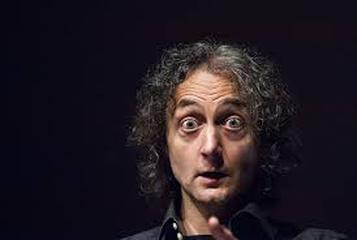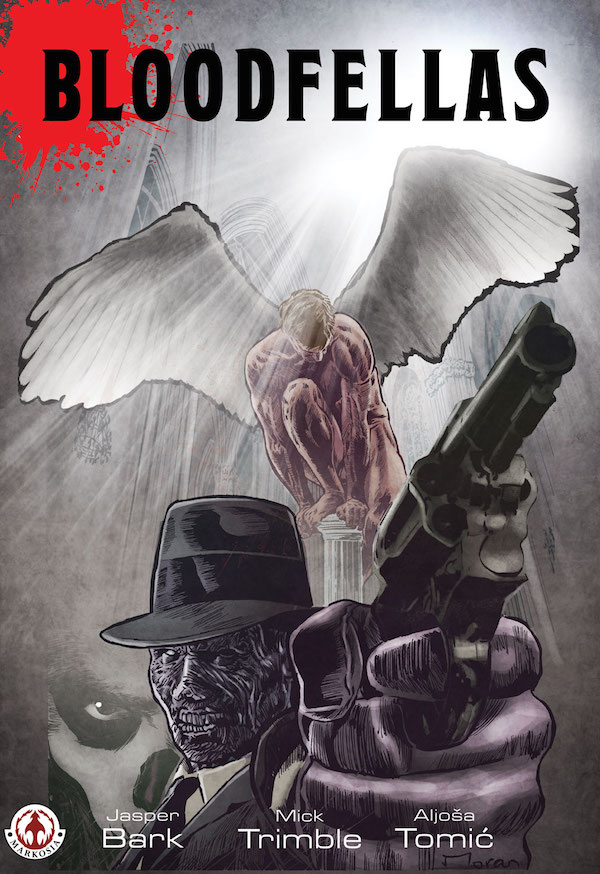Jasper Bark once ate my brains (don’t believe me? Here’s irrefutable proof). So it’s with pleasure, and not a little apprehension, that I welcome him to this site with a guest post. Take it away, Jasper…

Over a decade ago, while I was a film journalist, I got to interview producer Jeffrey Katzenberg as part of the the press junket for Shrek 2. At one point I asked him if he thought the Shrek franchise was subverting the fairytale/family entertainment genre, so beloved of Disney? Katzenberg rolled his eyes and shook his head at my question.
“Y’know,” he said. “I get about ten young writers coming into my office every week telling me they’ve got a script that reinvents some genre or other. But you know what – I wish they’d just learn to write the freaking genre, before trying to remake it!” I remember being a bit abashed at the time, not just because he’d brushed off my question, but I probably had some work tucked away in a drawer that aspired to reinvent a genre or two. With hindsight however, I can’t help thinking how spot on his comment was.
Every genre has to reinvent itself over time if it’s to remain relevant and fresh to successive generations. However, so many attempts end up falling flat, or missing the mark. So, what I’d like to look at in this guest post, is the ways in which writers, directors and other genre practitioners have successfully subverted the horror genre throughout its long history, to get an idea of what really works.
One of the most important reinventions came with introduction of psychological horror in the mid 50s. Up until that point the major staples of horror had come from the works of gothic writers like Mary Shelley and Bram Stoker. Genre is often defined by its repeated tropes, and the tropes that were most prominent in pulp magazines like Weird Tales, and the Universal films of the 30s and 40s, were dark looming castles, murderous monsters and the dangers of arcane knowledge, either scientific or occult.
The writer most responsible for this reinvention was Robert Bloch, who was no stranger to the tropes mentioned above, having been a stalwart of Weird Tales and a member of HP Lovecraft’s inner circle. Bloch stated in an interview, published in Douglas E. Winter’s ‘Faces of Fear’, that: “I had pretty well mined the vein of ordinary supernatural themes until it had become varicose. I realized, as a result of what went on during World War Two, and of reading the more widely disseminated work in psychology, that the real horror is not in the shadows, but in that twisted little world inside our own skulls.”
Bloch understood that one of the driving forces behind horror was a fear of dark knowledge, and the threat of death at the hands of the monsters this knowledge unleashes. He subverted the genre by replacing these old tropes with new one to achieve the same effect. So gothic monsters are replaced by dangerous psychopaths and arcane knowledge is replaced by aberrant psychology. This reached its apotheosis in his most famous work ‘Psycho’ and its influence is felt in every slasher movie made right up to the present day.
Psycho also had an impact because it took place in a modern setting, rather than an 18th century castle somewhere in eastern Europe. Bloch owes a debt of gratitude to writers Fritz Leiber and Richard Matheson for this use of setting. Building on the work of Lovecraft, who also used modern settings for his work, Leiber and Matheson were among the first writers to relocate the standard threats of horror to a modern urban setting. In doing so they were hugely influential on a whole host of horror creators from the writers and artists of EC Horror comics through to Stephen King and the horror revival of the 70s and 80s. Setting is an important part of redefining a genre, by taking a well worn icon of horror and placing it in an entirely new environment, you can breath new life into an old idea.
Matheson is also responsible to a great degree, for the invention of a sub-genre. His novel ‘I am Legend’, has not only been filmed countless times in official adaptations, it was also the inspiration for George Romero’s unofficial adaptation ‘Night of the Living Dead’. As Romero didn’t have the actual rights to the novel he turned the vampires into ‘flesh eating ghouls’ who eventually became zombies. This launched the whole canon of zombie apocalypse tales which, in effect, subverted the genre by turning the setting into a trope itself.
While we’re on the subject of the zombie apocalypse it’s worth mentioning that the current popularity of this sub genre is down to its reinvention in the early 00s by Brian Keene, Robert Kirkman and my host on this blog David Moody. These writers didn’t accomplish this reinvention by introducing new tropes, or changing the setting. Their major innovation was focusing the stories on the central characters, placing ordinary people in an extraordinary situation and documenting their desperate fight for survival. So it would seem that the use of character is as important a factor in re-imagining genre as the setting or the tropes.
Mash ups have become very popular of late and this has led to a lot of interesting attempts to breathe new life into more than one genre by marrying them together. One of the ways this works is by cross pollinating tropes, that is, taking a time worn trope from one genre, transplanting it into another and having it operate according to the rules of the new genre. I must confess that’s what I did with the graphic novel ‘Bloodfellas’ drawn by Mick Trimble. ‘Bloodfellas’ is a horror/crime mash up featuring zombie gangsters and set in the prohibition era. For this story, we went right back to the old school voodoo take on zombies and we took the standard tropes of gangster and crime fiction, such as the corrupt land deals that drive the movie ‘Chinatown’ or the unwilling son taking over the family empire as in ‘The Godfather’, and we put a dark supernatural spin on them, hopefully creating something new. We were also able to use authentic voodoo lore to justify having sentient zombies who speak, a metaphor for the dehumanizing nature of the violence integral to a life in organized crime.

I can’t say whether our attempt to subvert the zombie genre was anywhere near as successful as the works of the other writers I’ve mentioned above, but I hope I’ve shown that we’re operating in a time honoured genre tradition. Horror is an amazingly permeable genre because it’s based on the things that scare us and these change over time. Old terrors sometimes need a modern makeover and sometimes they need to be taken back to their roots to remind us why they were so powerful in the first place. Attempts to reinvent or subvert the horror genre can only work if those involved have a good working knowledge, and a healthy respect for everything that has gone before.
There’s nothing wrong with producing work that celebrates the genre as it currently stands, but maybe you’ve got a clear idea of where horror is bound in the future, or a novel, tucked away in a drawer, that’s going to change everything. If so I’d like to hear about it.
To learn more about ‘Bloodfellas’ please check out our Facebook page or look us up on Amazon.